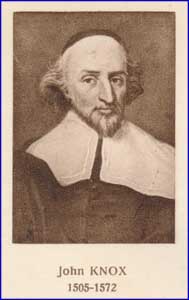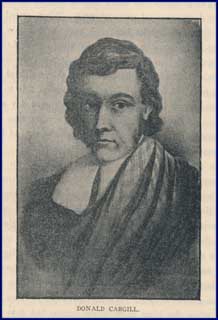Historical Prologue
Ascension Presbytery was chronologically the 19th presbytery formed within the PCA, being officially organized on July 29, 1975. Originally its encompassed a larger territory, but those borders were diminished with the formation of Pittsburgh Presbytery on 1 January 1993, and later on 1 January 2010, Ascension contributed churches to the formation of Ohio Presbytery. Presently its borders include all of Pennsylvania north and west of and including the counties of McLean, Elk, Clearfield, Jefferson, Armstrong, Butler, and Beaver counties. The following brief history of the Ascension Presbytery was composed by the Rev. Richard E. Knodel, Jr.:—
The Presbytery of the Ascension of the Presbyterian Church in America did not spring forth de novo. Among reasons for its formation were many that were not of the moment. The constituents of the Presbytery of the Ascension were almost exclusively members, in one way or another, of the United Presbyterian Church in the United States of America (hereafter cited as the UPCUSA). In broadest terms, it could be shown that the continual turning of the majority of the UPCUSA toward a crass latitudinarianism was placing a greater and greater torque on firm evangelicals with that body. The attrition which had surfaced during the earlier portion of this century had, in many cases, reached an undesirable maturation of unbelief and corruption. No matter which field might be investigated, be it doctrine, missions, education, management, social concern or evangelism, the seeds of corruption could be seen reproducing themselves at an unnatural rate.
Yet while there were such cyclical crises, problems which for the Evangelical seemed to resurface with a foreboding rapidity, there was, for the most part, an inverse reaction of silence from the evangelical camp. Most evangelicals were hesitant to take precipitous action though they were in the midst of a self-admitted crisis. The proverbial “carrot”, representing possible changes and hope, was seen to be continually dangling before the conservative’s watch. Whether it was a humility which was deeply conscious of its own fallibility, or whether it was a hesitancy to become embroiled in an open hostility, the posture of most evangelicals was inert. And this was a position which was open and vulnerable to the disease of the greater portion of the body. Furthermore, it presented the evangelical involved, with the problem of “what degree” of liberalism there must be, before it would be morally advisable to either attempt discipline within the church, or to exercise reverse discipline by separating oneself from the church.x
But for the vast majority of the members of this new presbytery, such agonizing decisions were made unnecessary, by the direct action taken by the UPCUSA. Most felt that they were asked to leave their church, and that the most honorable way that this might be accomplished was to “peacefully withdraw.” This action was precipitated by the popularly known “Kenyon Case” which began in the late Spring and ended in the late Fall of 1974. The watershed of this case had taken, and is taking place in 1975, even as this account is presently being penned.
Mr. Walter Wynn Kenyon was an honors graduate of Pittsburgh Theological Seminary. in his trials for ordination, Mr. Kenyon, upon being asked his position on the ordination of women, stated that he could not in good conscience participate in the ordination of a woman. He said that it was his understanding of Scripture that prevented such involvement, but went on to say that he would not stand in the way of such an ordination, if such was the desire of a church which he would happen to serve. Immediately there arose much dissent, and such dissent grew until the overwhelming majority of the church endorsed the judicial verdict which banned Kenyon and all future Kenyons from the pulpits of the UPCUSA. Furthermore, there was both explicit and implicit action which was taken against those men already ordained.
The Rev. Arthur C. Broadwick (and the Union UPCUSA of Pittsburgh) and the Rev. Carl W. Bogue, Jr. (and the Allenside UPCUSA of Akron) were already involved in litigations which involved this issue. And, in an even more pervasive way, the Stated Clerk of the UPCUSA (Mr. William P. Thompson), acting as the official interpreter of th Constitution of the UPCUA, ruled that as one’s answering the ordination/installation questions affirmatively was involved in the final decision in the Kenyon Case, any presently ordained pastor or ruling elder who held to the Kenyon views, could likewise never be placed in another pulpit or office unless he changed his views. The constitution of the UPCUSA clearly stated that men should exercise “forebearance in love” in situations where non-essentials of the presbyterian system of doctrine and polity were at stake. when the Permanent Judicial Commission of th UPCUSA ruled that Mr. Kenyon could not be ordained (i.e., granted exception on this matter of conscience) it effectively elevated this doctrine concerning social relationships to the place of being a major doctrine of the church. Furthermore, by application, it appeared that this new essential would eclipse all others and become the sine qua non of “orthodoxy” test questions.
Such action by the Permanent Judicial Commission led to a crisis for all of those pastors and elders who held to the traditional views on this question and who were now considered heretics. Accordingly, to uphold the peace, unity and purity of the church, most of the men who made up the membership of the charter presbytery peaceably withdrew from the UPCUSA.
These decisions and their subsequent effects were aided by many informal gatherings of like-minded individuals, beginning with the Kenyon Case and continuing through 1975 to the official organization of the Presbytery of the Ascension on July 29, 1975. The three meetings immediately preceeding the organization were unofficially recorded under the title of “Pre-Presbytery Meeting” and shall be spread upon the minutes of the present presbytery as an appendix to this historical program.
A fitting conclusion to this description of the genesis of the Presbytery of the Ascension is the mention of the Presbytery’s new affiliation, the Presbyterian Church in America. In the Fall of 1974, men who were affected by the drift of the Kenyon Case, sent four representatives, from an informal committee which was considering alternatives to the UPCUSA (i.e., in case that body should make a ruling against Mr. Kenyon which would affect the church as a whole), to the second General Assembly of the National Presbyterian Church (which became the Presbyterian Church in America). These four pastors (cf. the Rev. A.C. Broadwick, the Rev. K.E. Perrin, the Rev. R.E. Knodel, Jr., and the Rev. W.L. Thompson) were, on behalf of the larger concerned group, seeking a historically Reformed body which was also evangelical and mission minded. While this small entourage went to Macon, Georgia with many suspicions and questions, they returned overjoyed that there was an option such as the Presbyterian Church in America. When the Permanent Judicial Commission of the UPCUSA ruled as was feared, men who felt compelled to leave her bounds renounced the jurisdiction of that church and very happily were welcomed into a body of like mind. In the most concise manner possible, it would be said that it was the fervent balance of orthodoxy and spirit which led this group to finally align themselves with the Presbyterian Church in America. We pray that all of our actions might work to the praise and glory of our Sovereign God, our Victorious Christ, and The Spirit who continually sustains us.”
Respectfully and Humbly submitted,
/s/ Richard E. Knodel, Jr.
Postscript:
Dr. Wynn Kenyon went on to serve an illustrious career spanning thirty-one years as Professor of Philosophy and Biblical Studies at Belhaven University, and was also a founding member and ruling elder at Redeemer Presbyterian Church in Jackson, Mississippi. He passed away quite unexpectedly on February 13, 2012, at the age of 64.
 Were you, dear reader, aware that the man of the hour in Scotland, John Knox, once rowed a galley ship? No, it wasn’t for exercise. No, it wasn’t for some national pride of the fastest galley ship in a sailing contest. Simply put, John Knox was enslaved on that ship.
Were you, dear reader, aware that the man of the hour in Scotland, John Knox, once rowed a galley ship? No, it wasn’t for exercise. No, it wasn’t for some national pride of the fastest galley ship in a sailing contest. Simply put, John Knox was enslaved on that ship.
